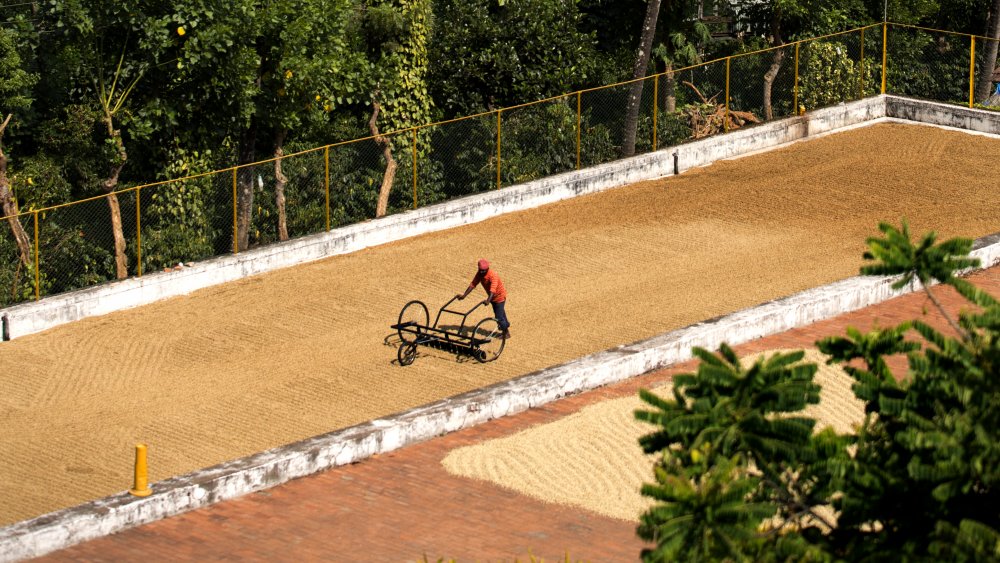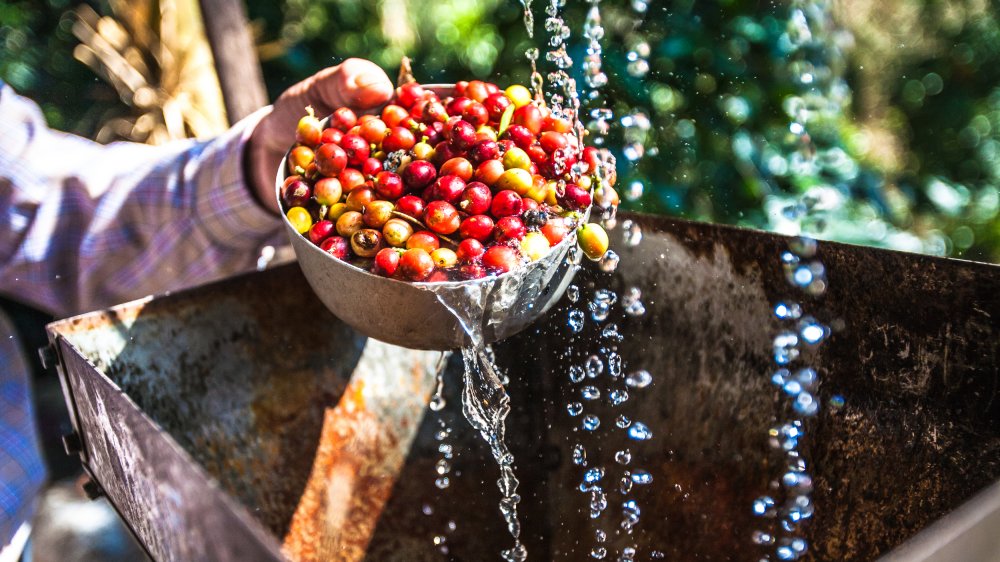Why The Coffee You're Drinking Isn't As Natural As You Think
The coffee bean enters an intricate journey before it makes its way thousands of miles across the globe — and, ultimately, into your cup. And maybe you knew that, somewhere in the back of your mind, but when it's 8 a.m., you're likely not concentrating on the harvesting or roasting process, but rather whether you can gulp down two cups in the next 10 minutes. That's fair.
But sooner or later, your curiosity will grow strong enough that you actually do care. How did this coffee get here? What makes it acidic? Mild? Nutty?
Many factors determine the flavor, scent, and acidity in a cup of coffee. But before the coffee is even roasted, it goes through an intense, hours-long preparation process. Coffee beans can go through three different processes before they transform into the beverage you know and love. And hint: Some coffee processing methods are more "natural" than others.
Coffee: The dry process
Here's the lowdown: Coffee beans are found nestled inside a fleshy, red fruit — often called a coffee cherry. The cherry pulp and skin can make a big difference in how your coffee will eventually taste (via Eater).
When coffee goes through the dry process, its beans, seed, and fruit are left intact. The entire coffee cherry is dried naturally, according to Broadsheet. This is also known as a "natural" coffee. During that drying process, the cherry dries and withers onto the coffee seed, and this affects the flavor of the coffee beans. Even after the beans are roasted, pulverized, and brewed, they will still hold flavor from the coffee cherry. The dry process can be found in countries with dry air, where water is more scarce, like Ethiopia.
Dry process coffee can create some bold flavors. Since the dried fruit plays such a role in this process, "natural" coffees are often described as having strong notes of overripe fruit (via The New York Times). The coffee can even taste like ripe blueberries, according to Vinepair.
But sometimes, the dry process can be tricky, and needs a lot of attention. When you've got hundreds of coffee cherries drying out in the sun, at varying levels of ripeness, the flavors can turn out inconsistent in some cases, according to the Perfect Daily Grind. But that doesn't mean it doesn't have fans: even Starbucks has its own brand of Ethiopian, dry process coffee.
Coffee: The wet process
Wet process coffee — also known as washed coffee — has likely made its way into your cup at some point. This method has undergone more processing than dry process coffee. That doesn't mean it's bad, or less authentic — just different.
When coffee beans enter the wet process, the cherry pulp and skin are torn from the seed, separating the beans from the fruit. Then, the beans float through a water mill, and they ferment for a couple days, according to Eater.
The fermentation adds acidity. And, you won't find those fruity flavors from the coffee cherry, since it's removed so early in the process. The flavor profile is worlds away from that of dry process coffee.
According to Vinepair, washed coffee is a more common method than natural, dry process coffee. There's also honey process coffee, which is sort of a mix of wet and dry process. In the honey process, the fruit is torn from the coffee seed, but the seeds are not fermented in water. Some of the pulp remains on the seed, and the coffee isn't so acidic.
Is it confusing? Definitely. But knowing where your coffee comes from — how it's made, why it tastes the way it does — will ultimately allow you to choose coffee that best fits you. Plus, you can flex your coffee knowledge on all your friends next time you grab a cup together.


